Exfoliation can do everything from sloughing off dead skin to simply providing a silky touch. It’s an important part of any skin regime, whether you need to shed some dried skin or reveal a healthy new layer after cells have lingered in humid conditions. Think of it as a gentle sandpaper to get rid of imperfections and to give your skin an extra smooth finish.
Exfoliation Explained
The skin is constantly renewing itself and creating new skin cells. These new cells are created in a lower layer of the skin called the dermis, and eventually they make their way all the way to the top visible layer which is the epidermis.
By the time they’ve reached the epidermis, these cells are full of keratin and have a lot of protective strength. At this point, these hardened cells die and need to be washed away.
That’s when we need to exfoliate!
Methods of Exfoliation
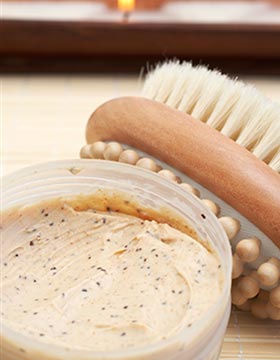
There are a few ways to exfoliate your skin. All methods have the aim of brushing away dead skin cells to expose new and fresh skin. The most common methods of exfoliation are chemical exfoliation and physical exfoliation.
Lotions and peels are common chemical exfoliants. Physical exfoliation involves scrubbing away dead cells with a brush and is especially effective on thicker skin on the feet, knees, or elbows. A mixture of the two can be done when combatting extra tough and thick areas as well.
Exfoliating your Face
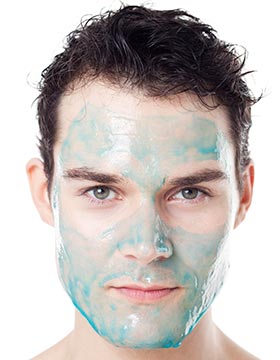
Alpha hydroxy acids (or AHA’s) are common and powerful chemical exfoliators. The most helpful and common of these are glycolic acid and lactic acid. These chemicals are often found in moisturizers and cleansing products which are gentle enough for daily use on the face.
Both glycolic acid and lactic acid are beneficial in exfoliating, however, the International Dermal Institute notes further benefits to lactic acid which include: “an increase in dermal glycosaminoglycans (GAGs – natural moisturizers), an increase in ceramides (epidermal barrier lipids), and improved water barrier properties.”
For very sensitive facial skin, enzyme exfoliants are also available. These exfoliate the skin in a more gentle manner, and the stimulation of cells is water-based rather than pH-based.
Depending on your skin type and the temperature and humidity levels of your environment, one should exfoliate as little as once or twice a week. Cold and dry conditions result in drier skin, and over-exfoliation can exacerbate this problem. If you live in humid conditions, your skin will be more resilient and could use up to one exfoliation a day.
Soften your Lips
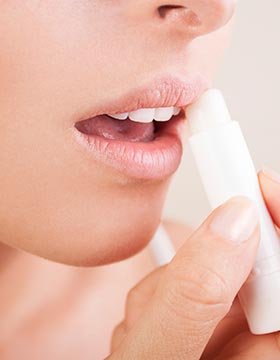
Don’t forget about your lips when you think about exfoliation! Though your lip skin is some of your most delicate, it is also exposed to wind, sun, and dry conditions. Your kisser might be in need of a little exfoliation, especially during the winter. If your lip balm can’t seem to handle the dry and hard skin, exfoliation can help to clear it off and reveal newer, softer cells.
A gentle face cleanser can often be enough to slough away dead cells on your lips. You can also do it yourself and create a great homemade lip exfoliator with honey and granulated sugar. Lock in the moisture afterwards with a trusty lip balm or chapstick.
Smooth Arms
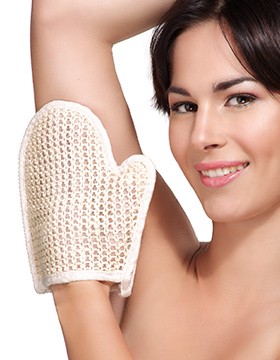
Arm skin can be some of the trickiest to smooth out and make silky. Sometimes all the lotion and moisturizer in the world just can’t keep arid elbows at bay. Even worse are the common red bumps that many of us have on the back of our arms.
These bumps are called keratosis pilaris, and unfortunately, they are very common and very hard to treat. The bumps here are on top of dry skin, which makes exfoliation a tricky solution. Gentle exfoliants such as a body wash exfoliator and manual exfoliation with a loofah are the best options to smooth out these bumps.
Succulent Elbows and Knees
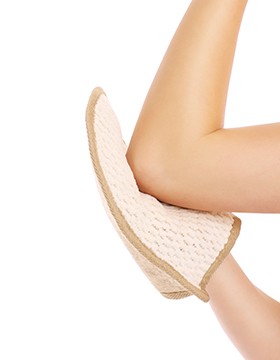
Skin tends to get thick and dry on your bendy body parts. Because of its thickness, skin here reacts well to manual scrubs or rougher formula scrubs. Use a loofah, a brush, or a scrub in addition to either a store-bought exfoliant or a home-made formula.
Great scrubs can be made out of brown sugar, lemon and salt, and even lemon and baking soda. These ingredients make for an abrasive scrub which is perfect for dense spots on your elbows and knees, but make sure to keep it away from your face.
When you are done exfoliating, pat your skin dry and immediately lock in moisture with a nourishing lotion.
Silky Hands and Feet
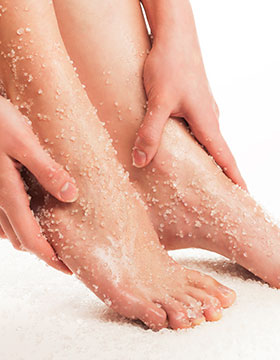
Our hands and feet receive the most wear and tear on our bodies, so some special products and treatments may be necessary to get them feeling moist and smooth like the rest of your skin.
When it comes to products which moisturize the hands and feet, an acid-free smoothing agent called urea is common. In cosmetics, two types of synthetic urea are used. Diazolidinyl urea is a preservative and many warn against the dangers of this additive as it releases formaldehyde. Hydroxyethyl urea, however, is considered safe to use in cosmetics. This urea is a great exfoliant, moisturizer, and it promotes cellular renewal.
Keep It Smooth, Keep It Simple
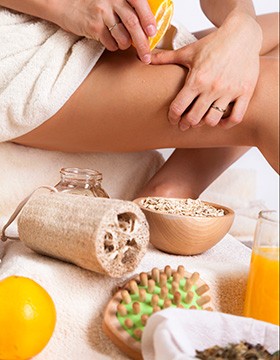
You don’t have to use fancy chemical products to exfoliate your skin. Items from around the house make great exfoliants. Try a simple mixture of brown sugar and olive oil for tough spots. Lemon and salt are great scrubs for these areas too. Sugar and honey work well to scrub away tough spots that just won’t lose dead skin, and even coffee beans and aspirin can be good for this too.

